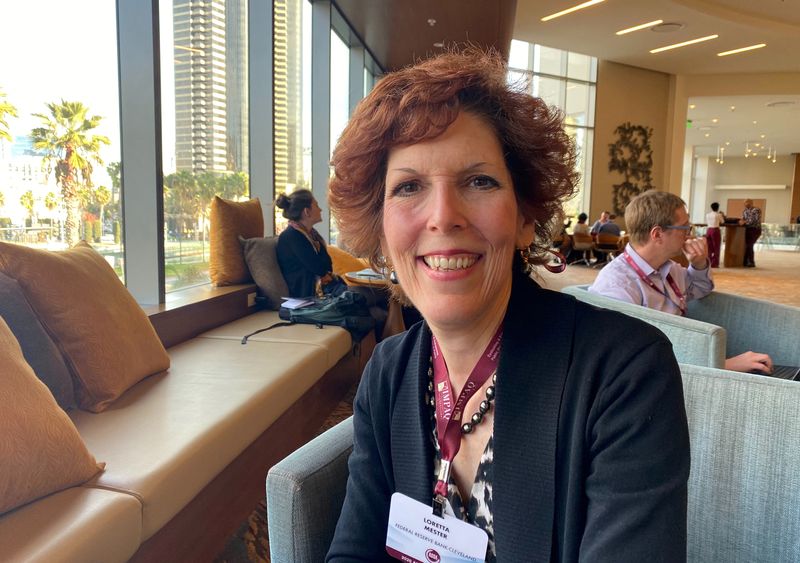By Michael S. Derby
(Reuters) -Federal Reserve Bank of Cleveland President Loretta Mester said on Tuesday that if the U.S. economy performs as she expects it could open the door to rate cuts, but she’s not ready yet to offer any timing for easier policy amid ongoing inflation uncertainty.
“Monetary policy is in a good place from which to assess and respond” to risks to the outlook, Mester said in a speech to a gathering of the Ohio Bankers League in Columbus, Ohio. “The current strength in labor market conditions and the strong spending data give us the opportunity to keep the nominal funds rate at its current level while we gather more evidence that inflation truly is on a sustainable and timely path back to 2%,” she said.
And when it comes to the prospect of lowering the Fed’s short-term rate target, Mester said if the economy moves forward as expected, Fed officials will gain confidence price pressures are easing and “then we can begin moving rates down. My base case is that we will do so at a gradual pace so that we can continue to manage the risks to both sides of our mandate.”
When it comes to the tactics of rate cuts, "I don't want to put a particular calendar date on it - it really is dependent on the state of the economy," Mester told reporters after the speech in a teleconference. She added there's "no rush" to cut rates in her view, while noting her exiting forecast of three rate cuts for the year still seemed reasonable.
Mester also warned in her formal remarks that no near-term change in policy is also possible. “If inflation appears to be stalling at a level above our goal, we would have the opportunity to maintain a restrictive stance for longer,” she said.
Mester’s comments were her first since last week’s Federal Open Market Committee meeting. Officials held their interest rate target steady at between 5.25% and 5.5%, while signaling a retreat in price pressures was opening the door to lower rates. But notably, Fed Chair Jerome Powell, in his post-FOMC press conference, downplayed the prospect of a March rate cut favored by markets, driving investors toward a market sell-off that pushed back the expected timing of the first Fed easing.
Mester, who will retire from the Fed this year, warned that it’s not a guarantee that price pressures will continue to abate as quickly in the future as they have thus far.
“There are reasons to be cautious in assuming that last year’s rapid pace of disinflation will be maintained as inflation gets closer to the 2% goal,” Mester said. That’s in part because reduced supply chain pressures have been key to lowering price pressure, and may not contribute in the future.

Mester said “while inflation may prove to be more persistent this year, my baseline forecast is that under appropriate monetary policy, inflation will continue to move down over time to our 2% goal.” She did not give a timetable for that to happen, although some believe it could be as soon as this year.
Mester also warned in her remarks that wage pressures are too high to be consistent with the 2% inflation target, but higher productivity rates could change that calculus.